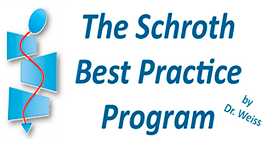
Monitoring Editor: Brooke Allemang
Reviewed by Fabio Zaina, Greta Jurenaite, Buket Akıncı, and Deborah Turnbull
Xiaofeng Nan, CPO,1 Tuğba Kuru Çolak, PhD,2 Burçin Akçay, PhD,3 Hua Xie, CPO,4 Liwei Zhao, CPO,5 and Maksym Borysov, CPO, PT6
1 Nan Xiaofeng’s Spinal Orthopedic Workshop, Xi’an Shaanxi, China
2 Department of Physiotherapy and Rehabilitation, Faculty of Health Sciences, Marmara University, İstanbul, Turkey
3 Department of Physiotherapy and Rehabilitation, Faculty of Health Sciences, Bandırma Onyedi Eylül University, Balıkesir, Turkey
4 Schroth Health Technology, Chongqing, China
5 National Research Centre for Rehabilitation Technical Aids, Schroth Health Technology, Beijing, China
6 Orttech Plus Rehabilitation Service, Kharkiv, Ukraine
Xiaofeng Nan, Nan Xiaofeng’s Spinal Orthopedic Workshop, Room 806, Unit 2, Zhongmao Square (15th floor), Beilin District, Xi’an Shaanxi, 710068, China, Phone: 86 189 9124 1048, Fax: 86 189 9124 1048, Email: moc.liamg@nnan.gnefoaix.
Author information Article notes Copyright and License information PMC Disclaimer
Abstract
Background
Bracing is an essential part of scoliosis treatment. The standard of brace treatment for patients with scoliosis today is still very variable in terms of brace quality and outcome. The Gensingen brace is a further developed Chêneau brace derivative with individual design, which can be adapted through computer-aided design.
Objective
This study aims to generate a template to obtain a database for prospective multicenter studies study to analyze the results of high-corrective asymmetric Gensingen brace treatment for patients with adolescent idiopathic scoliosis (AIS).
Methods
A template for the database was created, which contains the patients’ basic data (age, menarcheal status, Risser Sign, curve pattern, and daily brace wearing time), the Cobb angles of curvature, and the cosmetically relevant angles of trunk rotation (ATR). A retrospective review of medical records of patients with AIS, who met the Scoliosis Research Society’s inclusion criteria for brace studies, was performed to test the feasibility of the template. Template items were filled in by the researchers.
Results
Out of 115 patients between 2014 and 2018, the complete data of 33 patients followed up at least 3 months after complete Gensingen brace weaning could be analyzed. The mean age was 12 years, the mean Cobb angle was 33.6°, and the mean Risser value was 0.7 at the beginning of the treatment. The mean improvement in the Cobb angle on in-brace x-ray imaging was –26.1० (80% of in-brace correction). The Cobb angle of the major curvature changed as follows: curve stabilization was achieved in 7 (21.2%) cases, and curve improvement was achieved in 26 (78.8%) cases. None of the patients showed a curve progression. The Cobb angle was significantly reduced in the brace at the end of treatment and at follow-up evaluation (P<.001). ATR improved significantly for thoracic (P<.001) and lumbar curves (P<.001).
Conclusions
The database proved to be informative in the assessment of radiological and clinical outcome parameters. The example data set we have generated can be a helpful tool for professionals who work in clinics but do not store regular patient data. Especially with regard to different patient collectives worldwide, different results may be achieved with the same standards of care. In addition, the results of this study suggest that above-average correction effects with a full-time brace application lead to significant improvements in the Cobb angle after brace treatment has been completed.

